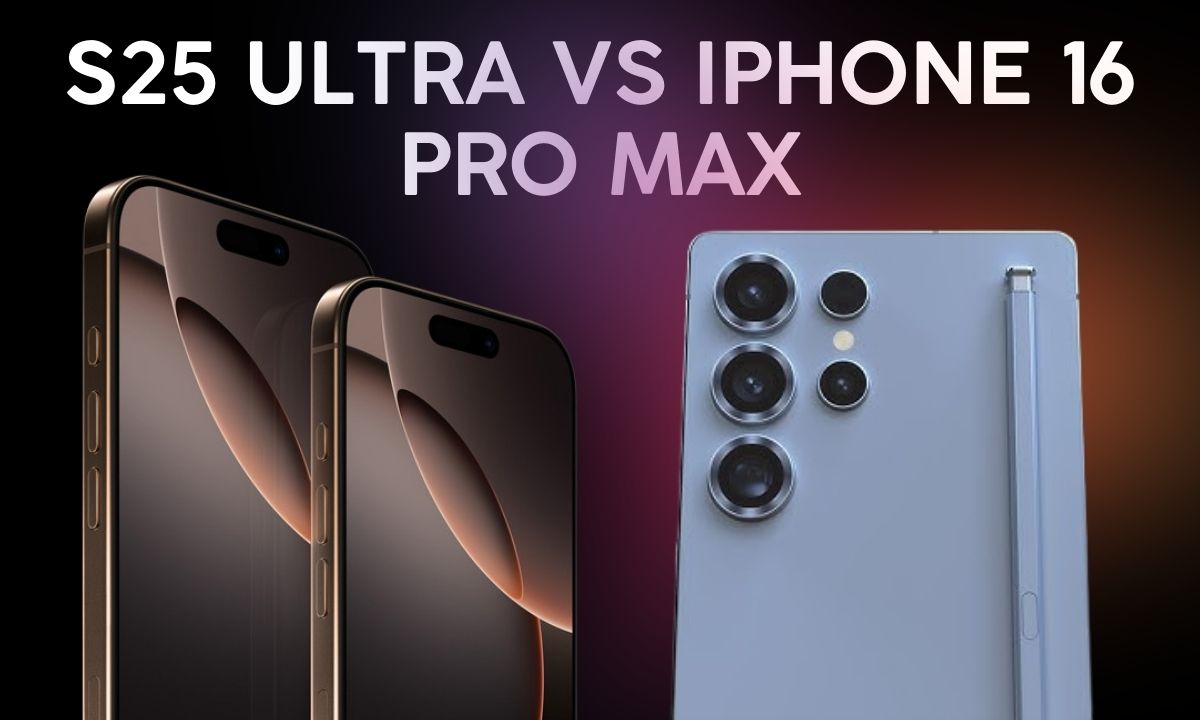With the release of the Galaxy S25 Ultra, Samsung is once again taking aim at its fiercest rival, Apple. Positioned as a direct competitor to the iPhone 16 Pro Max, the S25 Ultra boasts a premium build, advanced AI capabilities, and professional-grade cameras. But is this Samsung’s answer to Apple’s dominance, or does it fall short in its attempt to mimic the Cupertino giant’s latest innovations? Let’s break it down.
Design: Taking a Cue from Apple
Samsung’s decision to adopt a titanium frame for the S25 Ultra is an unmistakable nod to Apple’s iPhone 16 Pro Max, which also features a titanium build. Like Apple, Samsung touts improved durability and reduced weight, with the S25 Ultra weighing in at 218 grams—just slightly lighter than its rival. The design is minimalist and sleek, with subtle color options like silver, gray, and black, mirroring Apple’s refined aesthetic.
The inclusion of Gorilla Glass 2 Victus further aligns Samsung’s offering with the iPhone’s Ceramic Shield glass, reinforcing the S25 Ultra’s premium positioning. While Samsung has carved out its identity with the iconic floating camera array, the overall design feels like a deliberate attempt to match Apple’s formula for elegance and durability.
Performance: Matching Apple’s Efficiency
The S25 Ultra is powered by the Snapdragon 8 Elite processor, which promises faster speeds and greater efficiency, much like Apple’s A17 Pro chip. While Samsung maintains the same battery capacity as its predecessor, it claims the new processor optimizes battery life for all-day usage—again, a feature heavily marketed by Apple.
However, where the iPhone 16 Pro Max integrates its hardware and software ecosystem seamlessly, Samsung relies on Android’s open platform. While powerful, the S25 Ultra doesn’t achieve the same level of synergy that Apple users experience with iOS.
Camera: Mimicking the “Pro” Experience
Samsung has long marketed its Ultra series as the ultimate photography tool, and the S25 Ultra is no exception. However, the camera setup feels more like an iterative improvement rather than a game-changer. The addition of a 50MP ultra-wide lens—an upgrade from the S24 Ultra—brings it closer to the versatility of the iPhone 16 Pro Max’s triple-lens system.
The S25 Ultra retains its 200MP main sensor, which delivers stunning high-resolution images, but Samsung still lags behind Apple’s ProRAW capabilities. Apple’s computational photography has been widely praised for its lifelike results, while Samsung relies heavily on AI-driven enhancements, which, while impressive, can sometimes look overly processed.
Video Features: Catching Up to Apple
Samsung has introduced significant video upgrades in the S25 Ultra, including log recording and 10-bit H265 video support, clearly targeting Apple’s ProRes and Cinematic Mode users. These features provide greater flexibility for content creators, but the lack of exclusive innovations leaves Samsung playing catch-up.
Low-light video performance has improved thanks to on-device AI processing, a welcome addition that mirrors Apple’s Smart HDR enhancements. However, Apple’s seamless integration with Final Cut Pro on Mac still gives it an edge for professionals.
Generative AI: Borrowing Apple’s Focus on Integration
With the S25 Ultra, Samsung continues to push its AI capabilities, much like Apple’s ongoing efforts to integrate machine learning across its devices. Features like on-device subject removal and object manipulation make editing photos faster and more intuitive, eliminating the delays of cloud-based processing.
Samsung’s new Photo Studio tool, which applies artistic effects to portraits, feels similar to Apple’s Portrait Lighting effects. While the creative potential is exciting, these features are still seen as novelties rather than essential tools, especially when compared to Apple’s highly polished execution.
Where Samsung Falls Short
Despite its many strengths, the S25 Ultra highlights Samsung’s ongoing struggle to match Apple’s ecosystem. While the iPhone 16 Pro Max offers seamless continuity across devices—whether it’s AirDrop, iCloud, or Apple Watch integration—Samsung’s ecosystem feels less cohesive. Even with SmartThings and DeX, it lacks the intuitive flow that Apple users take for granted.
Samsung also lags behind in software longevity. While Apple promises years of updates even for older devices, Android’s fragmentation means Samsung’s updates are often limited by comparison.
Pricing: Worth the Premium?
The Galaxy S25 Ultra starts at $1,299, putting it head-to-head with the iPhone 16 Pro Max. For the price, Samsung offers impressive hardware, but the experience doesn’t quite match Apple’s polished ecosystem. For Android enthusiasts who crave the latest tech, the S25 Ultra is a strong contender. But for those deciding between the two, Apple’s seamless integration and longevity might justify the premium.
Final Verdict
Samsung’s Galaxy S25 Ultra is a clear attempt to match Apple’s iPhone 16 Pro Max, from the titanium build to its advanced video features. While it excels in raw power, AI capabilities, and camera performance, it lacks the cohesive ecosystem and refinement that makes Apple’s devices so compelling.
For Samsung fans, the S25 Ultra is a no-brainer—it’s lighter, faster, and more durable than ever. But for those considering the jump from iOS to Android, the S25 Ultra may feel like a powerful imitation rather than a genuine challenger.
